Top Lists
Top 10 Remarkable Astronomical Clocks
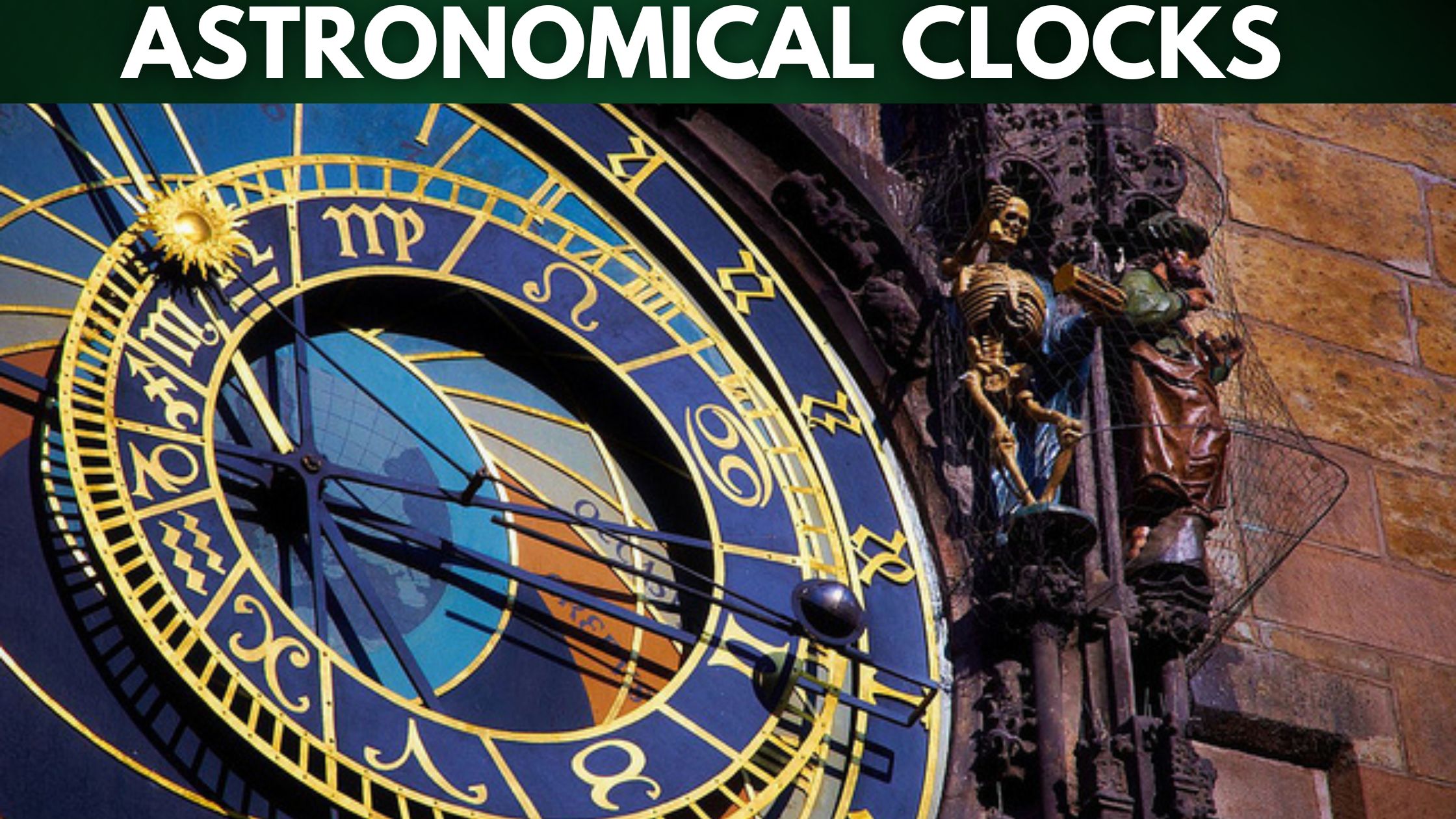
Astronomical Clocks
An astronomical clock, also known as a Horologium or orloj, is a clock that displays information about the position of celestial bodies such as the Sun, Moon, zodiacal constellations, and sometimes major planets.
The term “astronomical clock” is used to describe any clock that shows astronomical information in addition to the time of day. This can include the Sun and Moon’s location in the sky, the Lunar phases and age, the position of the Sun on the ecliptic and the current zodiac sign, sidereal time, and other astronomical data like the Moon’s nodes for indicating eclipses or a rotating star map. It should not be confused with an astronomical regulator, which is a highly precise pendulum clock used in observatories.
Astronomical clocks typically use the geocentric model to represent the Solar System. The center of the clock’s dial often features a disc or sphere representing the Earth, positioned at the center of the Solar System. The Sun is usually depicted as a golden sphere, rotating around the Earth once a day on a 24-hour analog dial. This design reflects the daily experience and the philosophical perspective of pre-Copernican Europe.
In this article, RNN will explore the top 10 astronomical clocks that have captivated people around the world.
Top 10 Remarkable Astronomical Clocks
1. Prague Astronomical Clock
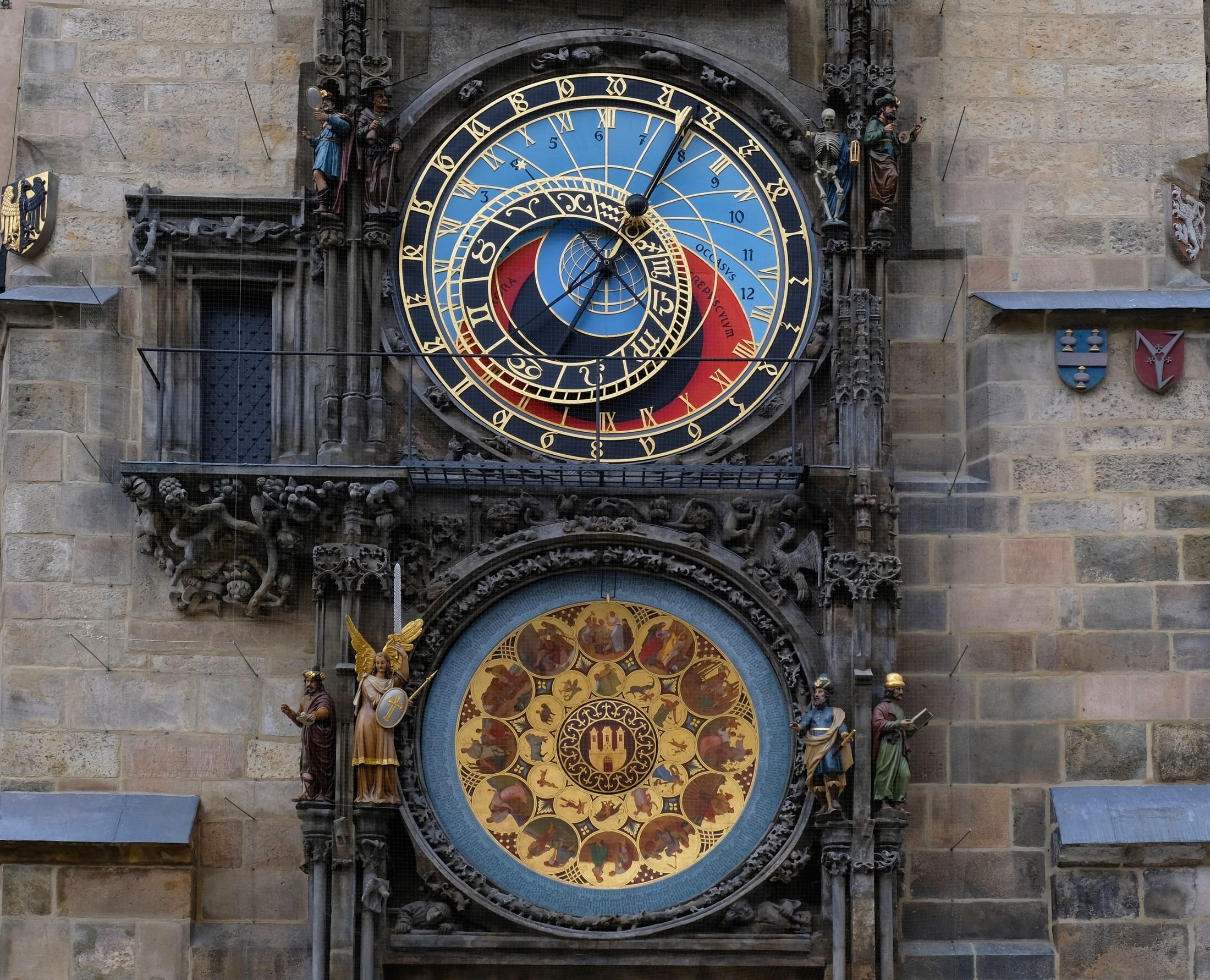
The Prague astronomical clock, also known as Prague Orloj, is a medieval clock located at the Old Town Hall in Prague, Czech Republic. It was installed in 1410, making it the third-oldest astronomical clock in the world and the oldest one still in operation. The clock, situated in Prague’s Old Town Square, dates back to the 15th century and not only tells the time but also displays astronomical information like the positions of the sun, moon, and zodiac constellations.
The Orloj is attached to the southern wall of the Old Town Hall in the Old Town Square.
2. Olomouc Astronomical Clock
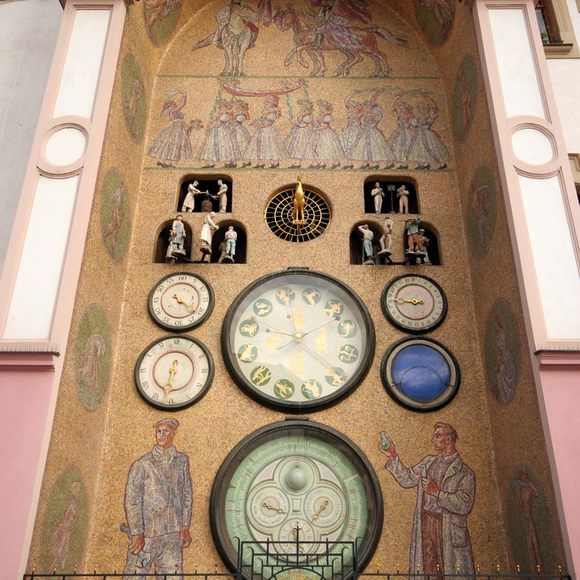
The Olomouc Astronomical Clock, situated in the Czech Republic, is a notable clock attached to the northern wall of Olomouc’s town hall. Constructed in the 15th century, the clock has undergone multiple reconstructions and currently showcases a design from 1955 in the socialist realism style. It stands out as one of the rare heliocentric clocks worldwide. The clock’s main attraction is its astronomical dial, which provides various information such as the time, date, and position of the sun in the zodiac.
3. Wells Cathedral Clock
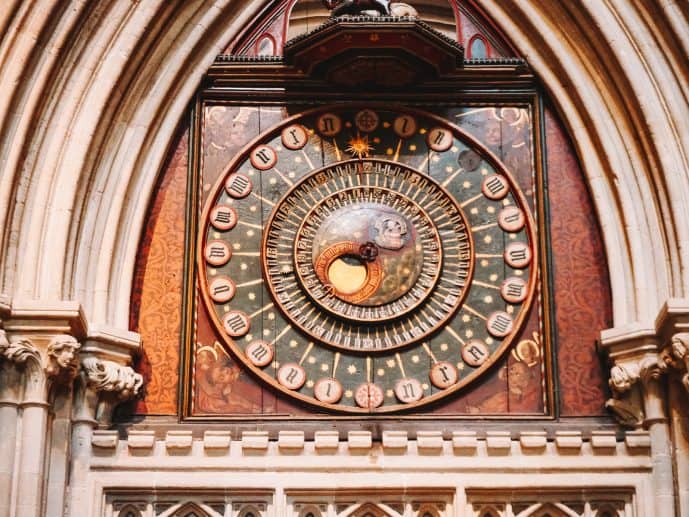
The Wells Cathedral clock is an old clock located in Wells Cathedral, England. It is one of several famous astronomical clocks in the West of England, dating back to the 14th to 16th centuries. The original mechanism, built between 1386 and 1392, was replaced in the 19th century and is now displayed and functional at the Science Museum in London. The clock’s face depicts the Earth at the center of the universe, with the Sun and Moon orbiting around it, representing a pre-Copernican view.
Additionally, there is another dial on the exterior wall, which is operated by the same mechanism. This dial has been installed since the 14th or 15th centuries and has undergone several restoration efforts.
4. Rostock astronomical clock
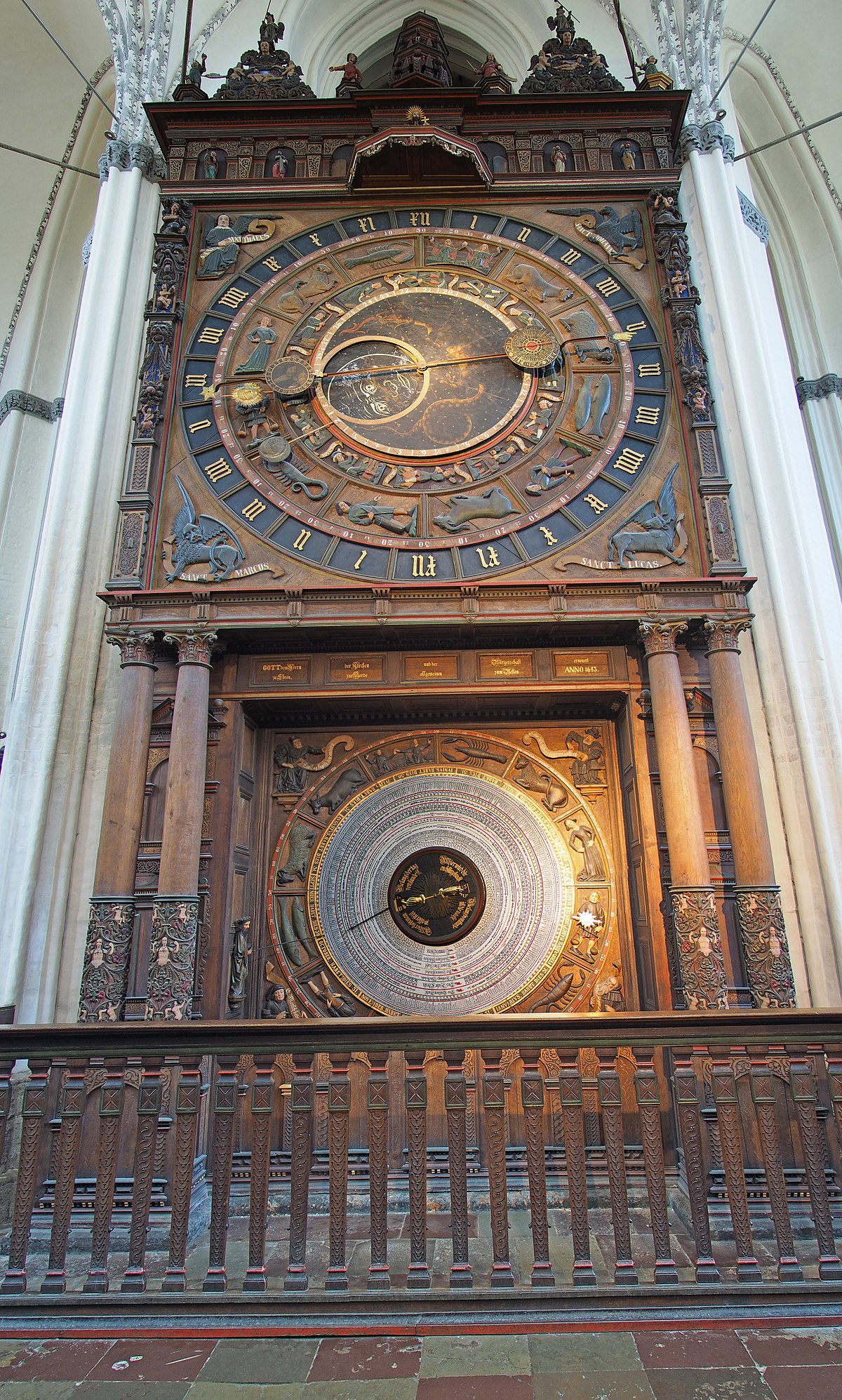
The Rostock astronomical clock is a clock that was built in the fifteenth century by Hans Düringer. It is located in St. Mary’s Church in Rostock.
The clock has three parts: the top part shows the apostles crossing before Jesus for a blessing, with the last one, Judas, being excluded. The middle part displays the time, zodiac signs, moon phases, and month. The bottom part is a calendar that will be valid until 2150. This medieval clock is the only one of its kind that is still working with its original clockwork.
5. Strasbourg Astronomical Clock
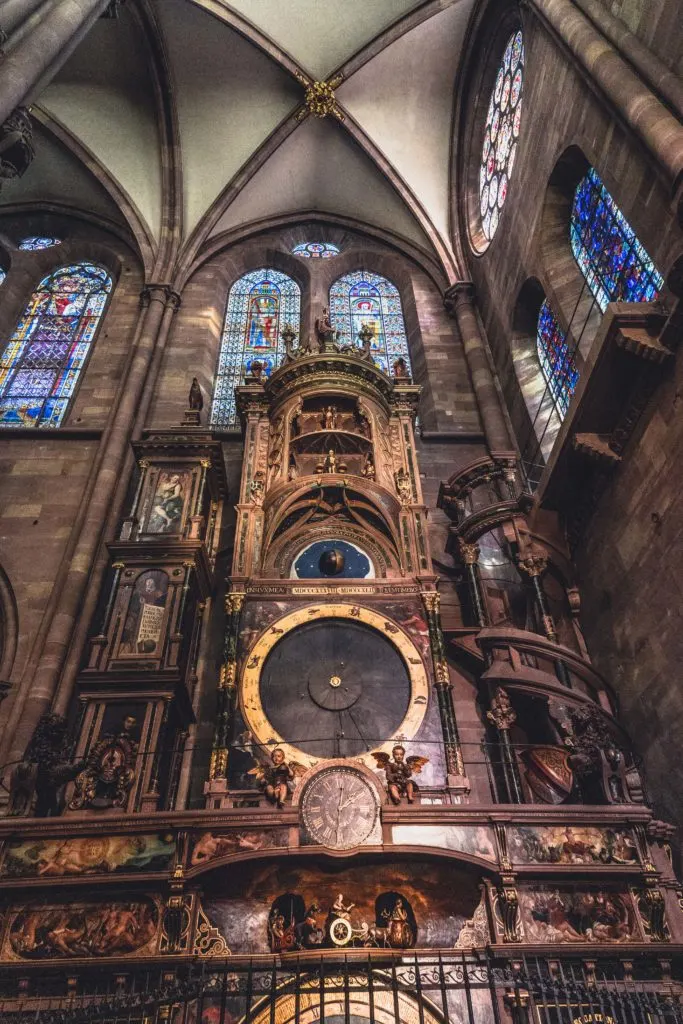
The Strasbourg astronomical clock is found in the Cathédrale Notre-Dame of Strasbourg, Alsace, France. It is the third clock in that location and was built during the time when France first took control of the city (1681–1870). The first clock was constructed in the 14th century, followed by the second clock in the 16th century when Strasbourg was a Free imperial city of the Holy Roman Empire. This clock, housed in the Strasbourg Cathedral in France, captivates visitors with its intricate mechanisms, animated figures, displays of planetary positions, and a perpetual calendar.
The current clock, which is the third one, was created in 1843. Its notable features include automata, a perpetual calendar (including a computus), an orrery (planetary dial), a depiction of the real positions of the Sun and the Moon, as well as solar and lunar eclipses.
6. Besançon astronomical clock
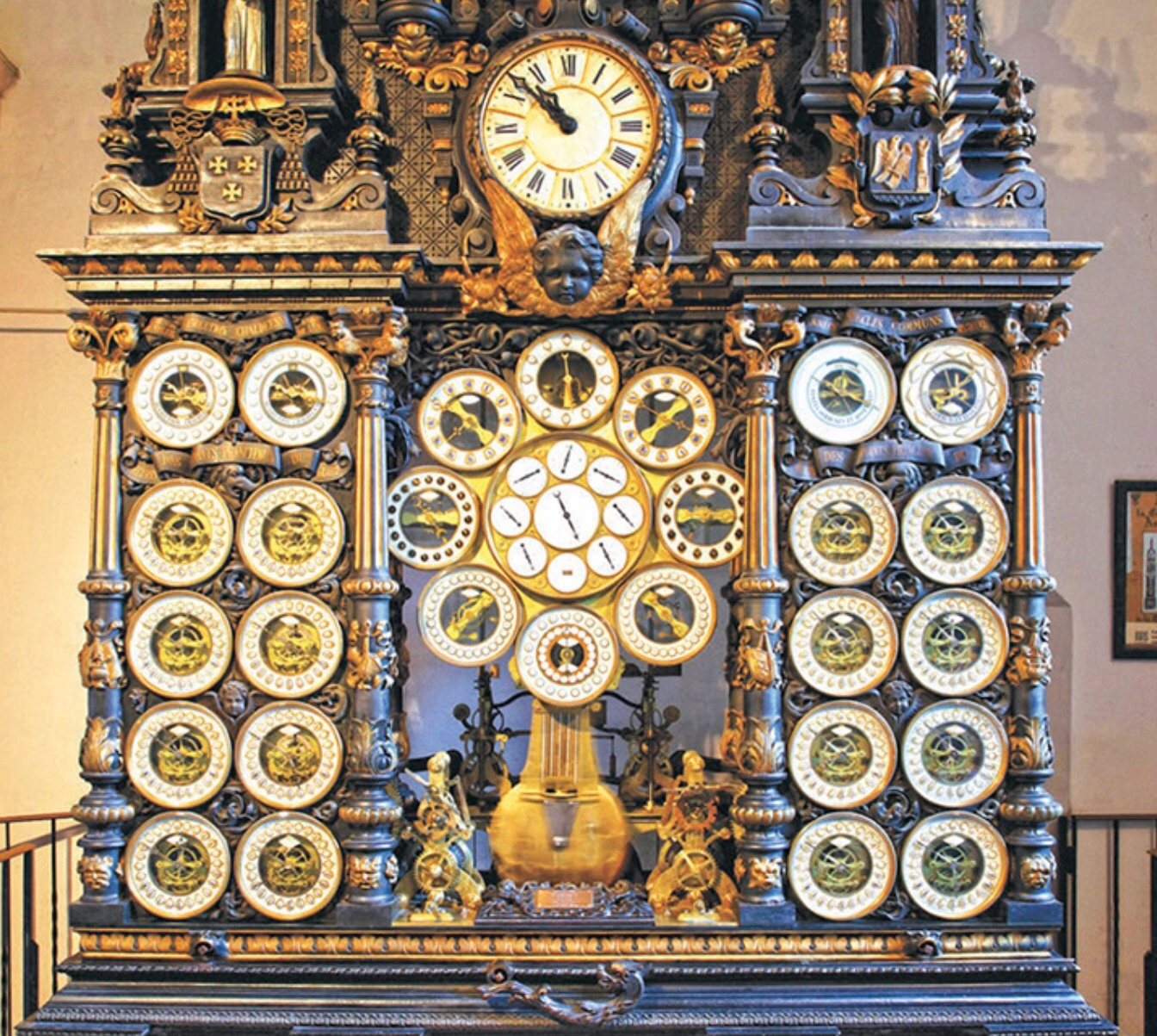
The Besançon astronomical clock is located in Besançon Cathedral. It was designed and built by Auguste-Lucien Vérité between 1858 and 1863, replacing an earlier clock built by Bernardin in the 1850s that wasn’t satisfactory. Unlike the clocks in Strasbourg, Lyon, and Beauvais, Besançon’s clock has a unique purpose. It symbolizes the belief that every second of the day, the Resurrection of Christ brings about a transformation in the lives of people and the world.
7. Beauvais astronomical clock
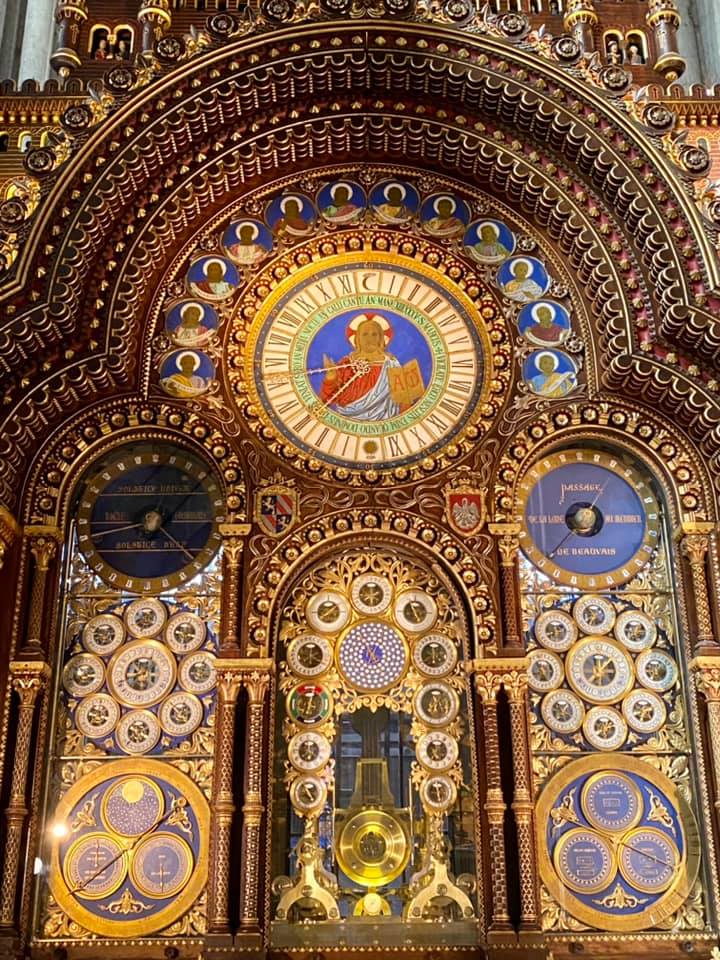
The Beauvais Astronomical Clock is a clock from the 19th century located in Beauvais Cathedral in northern France. It was built between 1865 and 1868 by Lucien Auguste Vérité. The clock is 12 meters high and 6 meters wide.
This clock has 52 dials that show various information such as the times of sunrise and sunset, the positions of the planets, the current time in 18 cities worldwide, and the times of high and low tides. It also displays the age of the moon on January 1 and the golden number used to calculate the date of Easter.
8. Lund Cathedral Astronomical Clock
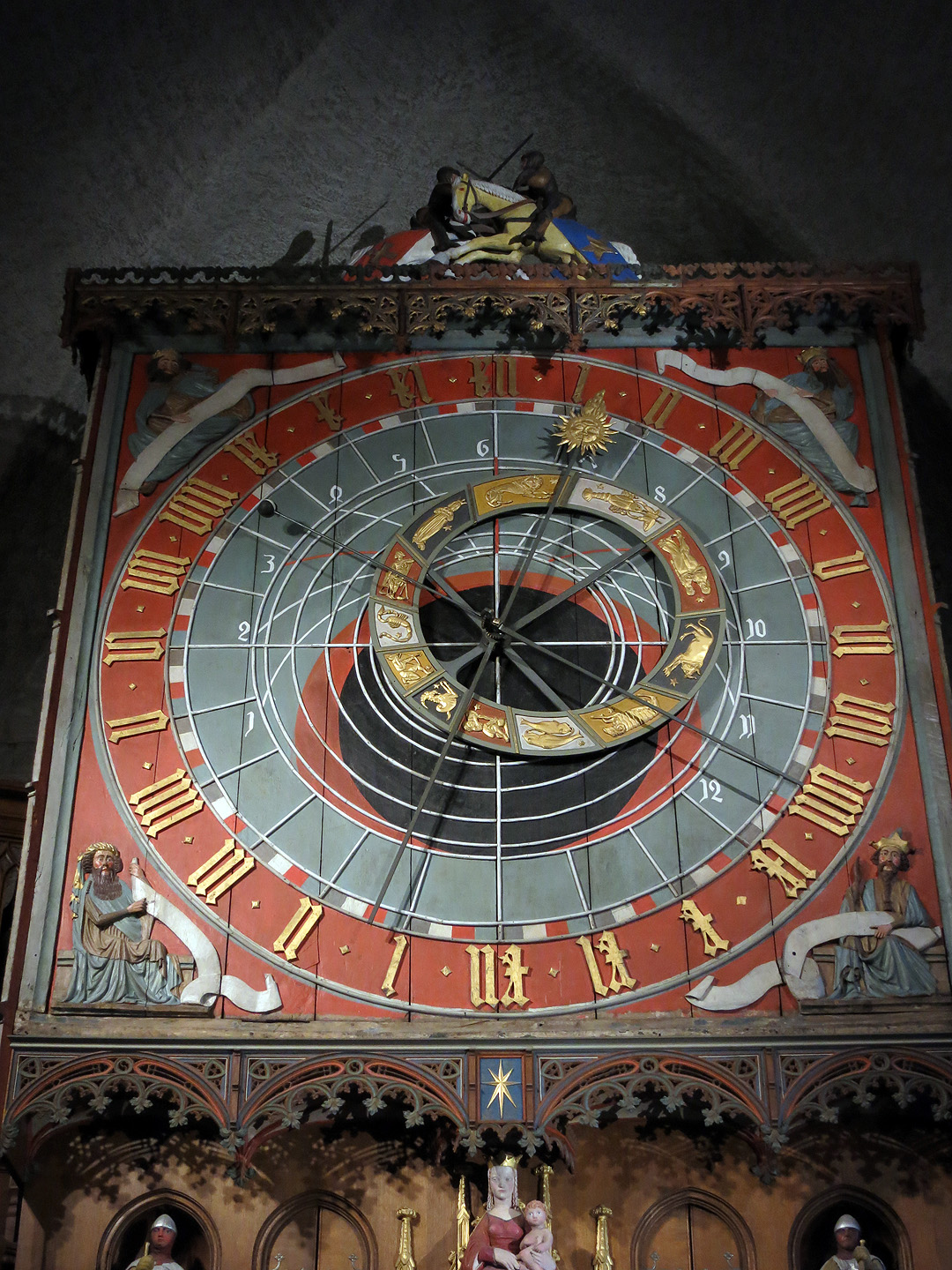
The Lund astronomical clock, also known as Horologium mirabile Lundense, is a 15th-century clock located in Lund Cathedral. It was mentioned in written sources in 1442 and was likely created around 1423-1425 by Nikolaus Lilienfeld.
The clock is part of a group of medieval astronomical clocks found in the South Baltic Sea region. In 1837, the clock was taken apart, but it was restored between 1909 and 1923 by Danish clockmaker Julius Bertram-Larsen and Swedish architect Theodor Wåhlin. The clock’s face and mechanism were salvaged from the old clock, while the casing, calendar, and middle section were recreated. It also provides astronomical information, such as the movement of celestial bodies.
9. Gdańsk astronomical clock
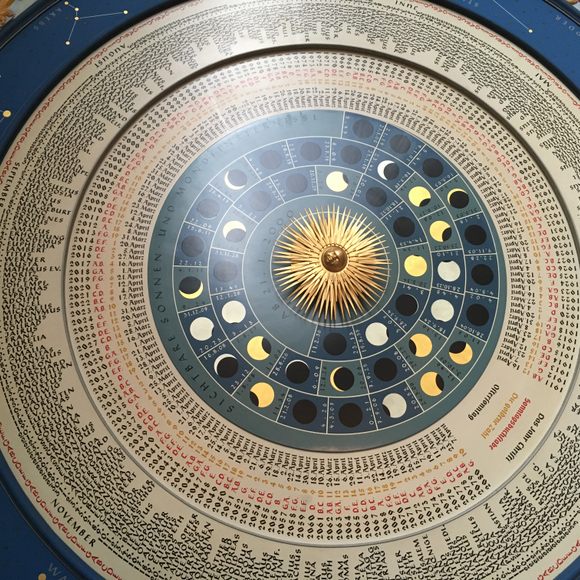
The Gdańsk astronomical clock is an ancient clock located in St. Mary’s Church, Gdańsk, Poland. It was built by Hans Düringer between 1464 and 1470. The clock has multiple dials that display the time, date, phases of the moon, and the positions of the Moon and Sun in relation to the zodiac signs. It also features a calendar of saints. Every hour, Adam and Eve ring the bell, and at noon, there is a procession with Adam and Eve, the Three Kings, the Apostles, and Death.
The clock stands at a height of 14 meters (46 ft) and was once the largest wooden astronomical clock in the world. However, it was extensively damaged during World War II and had to be reconstructed after 1945.
10. Lyon astronomical clock
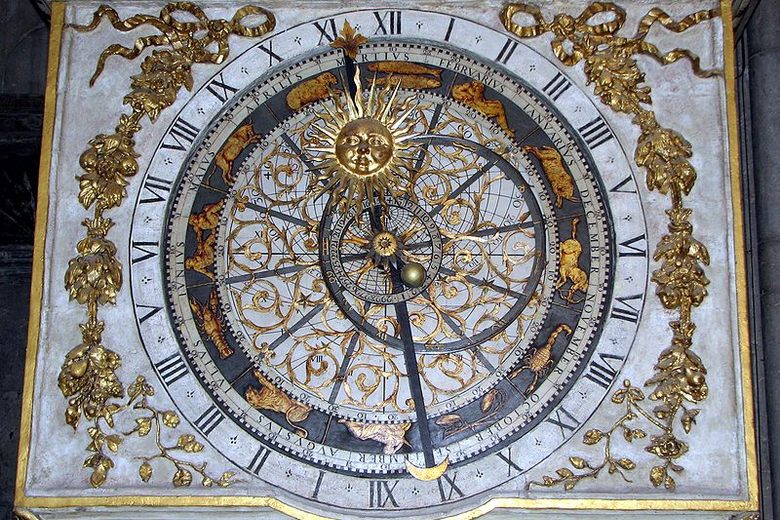
The Lyon astronomical clock is a 17th-century clock located in Lyon Cathedral. It is 9 meters tall and displays the date, position of the Moon, Sun, Earth, and stars using an astrolabe. The clock was first documented in the cathedral in 1383 but was destroyed in 1562. It was reconstructed in 1661 by Guillaume Nourrisson. During the French Revolution, all royal symbols were removed. The clock was last restored in 1954, resetting its perpetual calendar of 66 years, which remains accurate until 2019.
The clock’s central tower octagon features automated figures. Additionally, a Swiss Guard rotates around the dome. The movement of the clock stops when the hour is struck.
In conclusion: These top 10 remarkable astronomical clocks stand as testaments to human ingenuity and the fascination with celestial objects.
